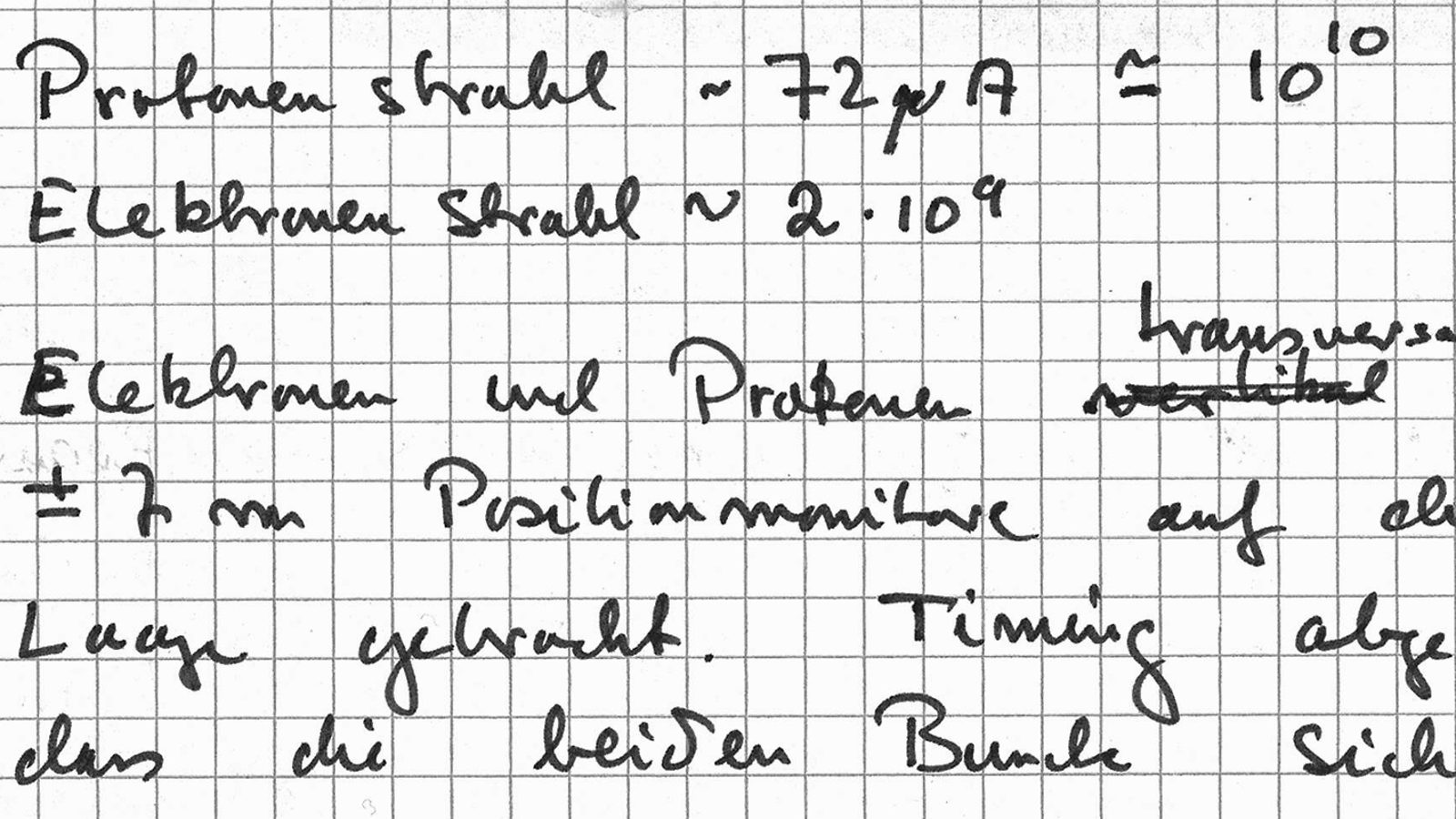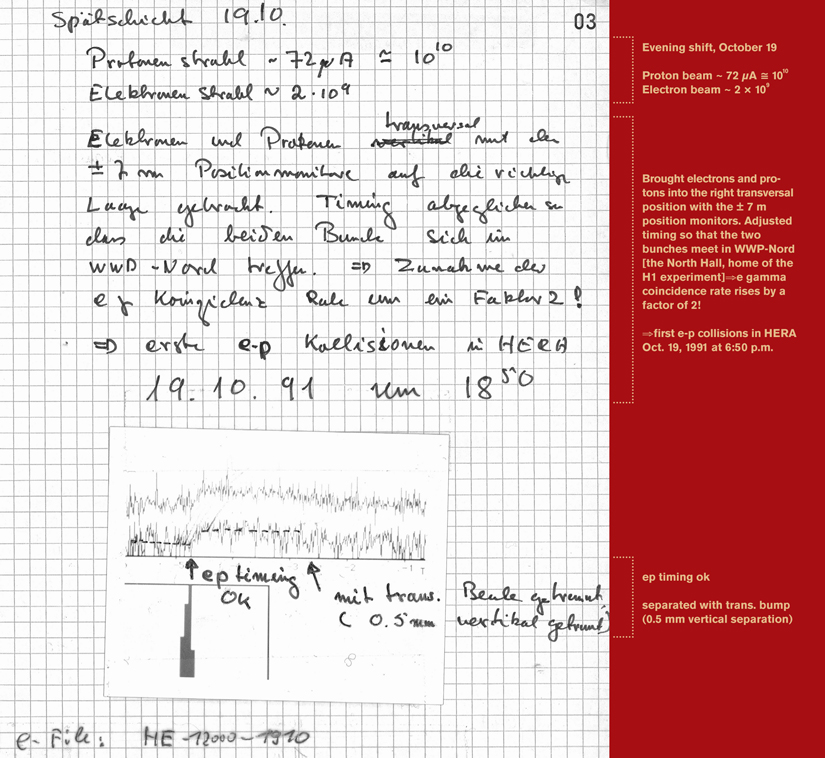HERA was the first and only accelerator to collide two different types of particles: electrons and 2000-times-heavier protons. By steering electrons traveling close to the speed of light into a beam of oncoming protons, scientists were able to search for new subatomic forces and map the proton’s interior with unprecedented precision.
Making electrons and protons collide at high rates was a huge challenge. Two completely different and independent accelerator rings were necessary to accelerate the particles. Ferdinand Willeke was responsible for commissioning the proton ring in 1991. When protons had been accelerated and stored at high energy for the first time, the electron team quickly injected the electrons. “Then it all went really fast, or at least that’s what it seemed like to us,” says Willeke. “When the luminosity experts from one of the experiments told us that they had a signal we were all thrilled. It wasn’t half as hard as we had expected.”
HERA operators filled 55 collision logbooks before they switched to electronic logs in 2001. On June 30, 2007, the HERA accelerator produced its last collisions.







